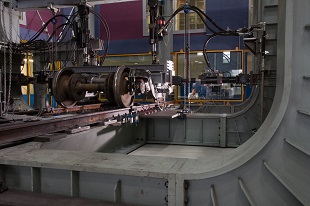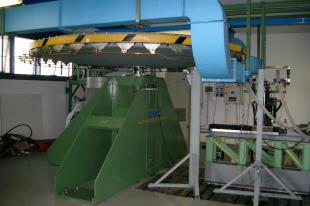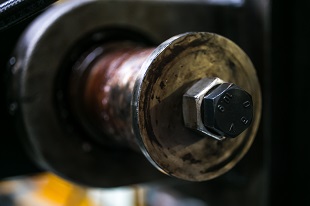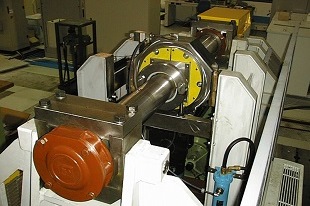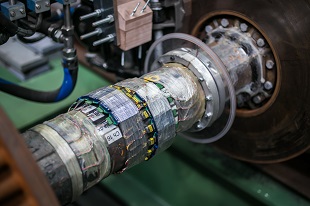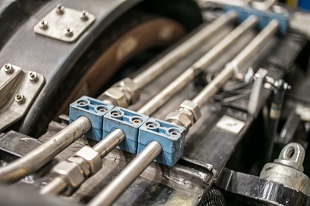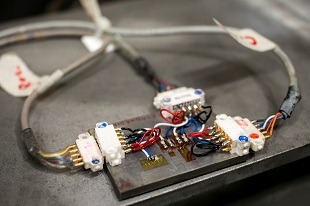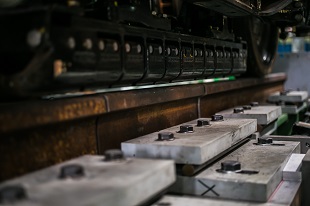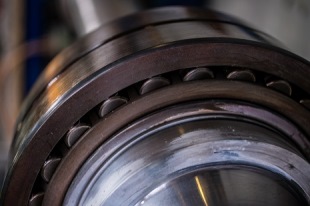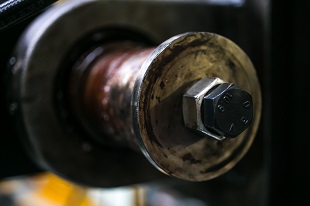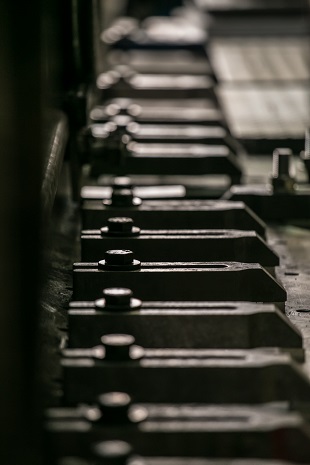
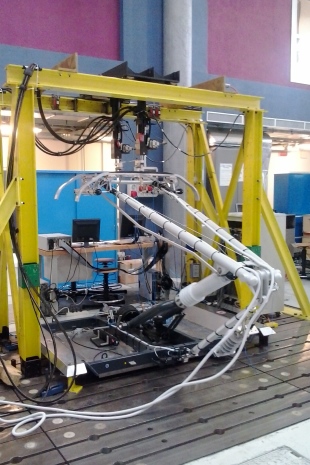
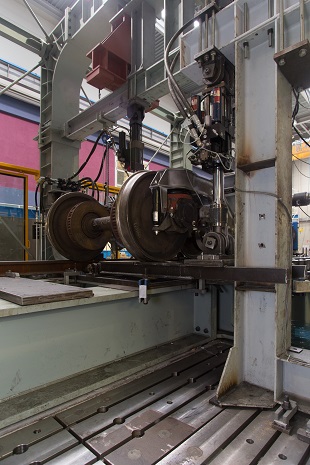
Description:
The laboratory provides a series of specifically test-rig designed for testing and characterization of several sub-systems of both, rail vehicle (axle, pantograph, bogie frame) and rail infrastructures (sleepers, insulated rail joints, fastening system). The variety of general-purpose hydraulic actuators and the great number of measurement devices allows the laboratory to realize custom designed setups for testing great number of rail subcomponents such as springs, silent blocks, air spring. Moreover, the laboratory can perform in-line testing for the assessment of both dynamic behaviour, comfort and aerodynamic of vehicles according to several European standard.
Certifications:
The laboratory meets the requirements of ISO/IEC 17025:2017. The following test are officially accredited by the Italian accreditation body ACCREDIA:
- Static tests on bogie frames, axleboxes and bolsters (EN 13749:2021)
- Fatigue testing of full-scale axles (EN 13261:2020)
- Homologation tests for fastening system (EN 13146:2021)
- Homologation tests for concrete sleepers (EN 13230:2016)
- Measurement of the friction coefficient between pantograph contact strips and contact wire of overhead line and measurement of wear rate for contact wire and pantograph contact strips (RFI-DMAIM.LA\ST TE65 del 2004)
- Train aerodynamic loads in open air: slipstream effects on passengers on platform and on workers trackside, head pressure pulse and maximum pressure variations in tunnels (TSI HS LOCPAS, 2014)
Certified tests ISO 9001:2008 (Italcert):
- Dynamic Interaction between pantograph and overhead contact line: calibration of the measurement system (EN50317, RFI/DI/TC.TE/ ST.TE 74D)
Accredited Staff ISO 9712:
- ST Strain Testing Level 1 and 2
- Dye penetrant inspection Level 2 and 3 Magnetic particle inspection Level 2 and 3
Instruments & Facilities:
- Bogie test-rig: reconfigurable test-rig for the testing of bogie frame, bolster and other vehicle components
- Dynamometric wheelset test-rig: characterization and calibration of dynamometric wheelset
- Pantograph test-rig: hardware in the loop device for the characterization of instrumented pantograph
- Axle test-rig: study of the rotating bending fatigue and crack propagation phenomena on axles
- Collector strips test-rig: testing on collector strips reproducing the real in-line conditions
- Sleeper test-rig: test rig equipped with 1000 kN dynamic actuator for homologation tests on main typology of sleepers
- Insulated rail joints testing machine: custom designed bi-axial machine for testing of insulated rail joints
- The laboratory can rely on a great number of measurement instruments calibrated, signal conditioner and acquisition systems
Activities:
Structural rail components testing
- Performs static, dynamic and fatigue tests on railway bogies and/or their components according to the international standard EN 13749
- Reconfigurable layout to allow the housing of all types of bogies currently in circulation on railways, metro, and tramways
- Possibility to control simultaneously a variable number of hydraulic actuators (up to 14) with different ranges of applicable loads up to a maximum of 1000kN
Pantograph characterization
- Allows the characterisation of pantographs reproducing the dynamic interaction with the catenary
- Possibility to replicate the stagger geometry and pantograph velocity
- Separate application of the loads in vertical direction for the two collector stripes
- Real time hardware in the loop control to simulate the real interaction between the pantograph and a simulated catenary
Rotating bending fatigue on axles
- Imposes a variable load to the central section of the axle while rotating reproducing the conditions needed for axles fatigue testing
- Maximum rotation speed 600rpm
- Maximum load 250kN with the possibility to impose load spectra to the axle
- Possibility to run tests in harsh environmental conditions to reproduce corrosion effects
Insulated rail joints testing
- Biaxial testing facility for the simultaneous application of longitudinal tractive sand vertical loads
- Maximum longitudinal load 1000 kN and maximum vertical load 500 kN
- Possibility to measure displacements and deformation along the specimen under test
Collector stripes test
- Performs wear tests on collector stripes reproducing the at best the real condition encountered in service
- Maximum tension applicable 1200A
- Maximum relative speed between collector stripes and overhead power line up to 210km/h
- Reproduction of the wind cooling effects, and the load imposed by the pantograph springs
Dynamometric wheelset characterization
- Static characterization a wheelset or, more in general a bogie, properly instrumented to measure the contact forces
- Real boundary conditions both at the contact interface (UIC60 cant angle 1/20) and at the axle-boxes (mounting on the test-rig of the entire bogie)
- Direct measurement of the three components of the contact forces acting on each wheel
- High variety of applicable loads (up to 150 kN per wheel in vertical, 40 kN in lateral and 20kN in longitudinal direction) and their combinations

